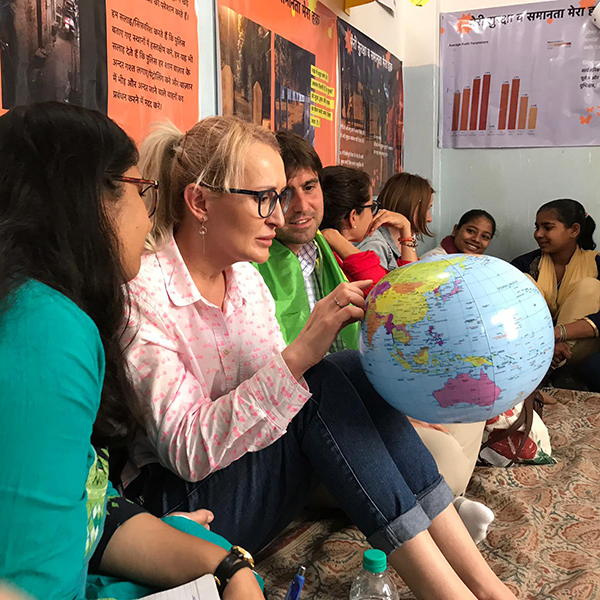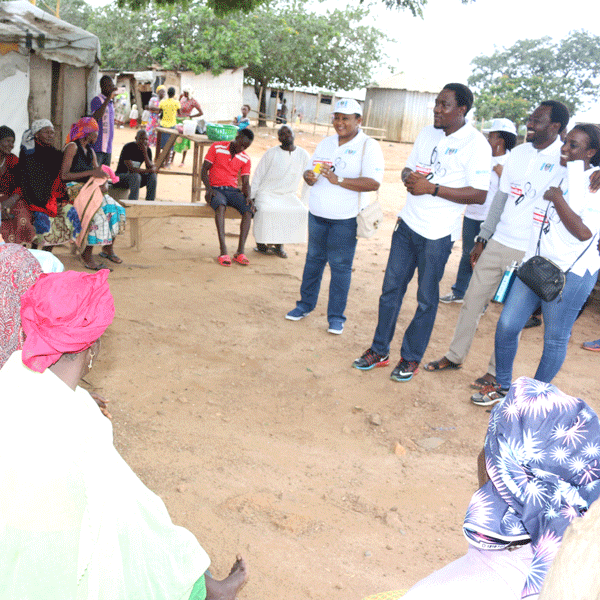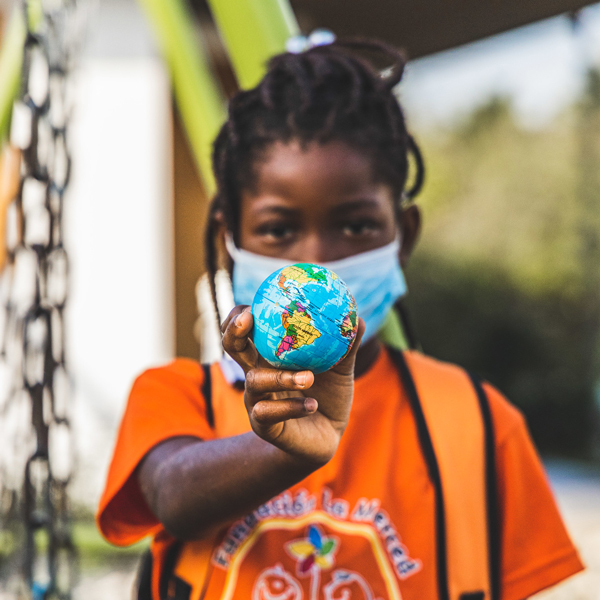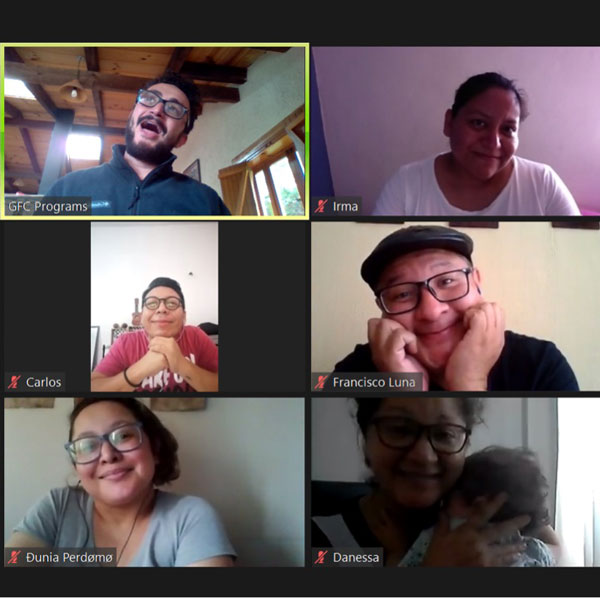This article was originally published in Philanthropy News Digest.
Global Fund for Children’s Yelizaveta Yanovich, Corey Oser, and John Hecklinger, and GFC Board member Jaclyn Foroughi share strategies and considerations for equitable monitoring, evaluation, and learning in the philanthropy sector.
In the philanthropy sector, growing efforts to shift power to communities often seem at odds with evidence-based practices that evaluate the effectiveness of the programs funders support. Traditional monitoring, evaluation, and learning (MEL) approaches can pressure grantees to focus on easily measurable results at the expense of working toward long-term social change.
In a recent Stanford Social Innovation Review article, for example, Mona Mourshed described the infatuation with measuring the number of beneficiaries served—a common measurement in traditional MEL—as a “plague of metric monomania.” Such measurements, which can be rigid and extractive, often ignore the depth of the social issues a program aims to address.
A growing number of funders are seeking to assess the impact their work has on grantees and communities without relying solely on traditional MEL methods.
They want to evaluate the effectiveness of the programs they support and gather evidence of social change without burdening and disempowering grantees. These funders recognize that grantees are often the most knowledgeable experts in their field. They are not simply interested in implementing a project; they know that shifting power back to communities and building trusting relationships with grantee partners leads to deeper, longer-lasting social change. By working together on MEL, a funder and a grantee can jointly decide what is most meaningful to measure and evaluate, while building each other’s capacity and the capacity of the communities they work in, incorporating feedback about the initiative into learning and evaluation practices, and recognizing evidence of change as multidimensional and complex.
Our organization, Global Fund for Children, has been working to develop and implement MEL approaches that prioritize collaborative learning. Other funders are also exploring ways to make measurement more equitable, inclusive, and participatory. For funders seeking new ways to conduct MEL, there are several strategies to consider:
Turn evaluations into an opportunity to develop capacity.
GFC recently completed a participatory evaluation for a four-year initiative funded by Dubai Cares, a global philanthropic organization based in the United Arab Emirates, to advance the rights and opportunities of adolescent girls in Central America. The learning review—as GFC calls evaluations to put the emphasis on learning—was a collaborative effort with 17 grantee partners in three countries that incorporated different participatory methodologies. GFC engaged partners at various stages, including design, implementation, and analysis, and looked for ways to turn evaluation activities into opportunities to develop their capacity. For example, when the GFC team was deep in the analysis of qualitative data, partners joined a workshop in which GFC’s Learning and Evaluation team demonstrated how to set up a qualitative dataset, walked the group through approaches for coding qualitative data, and discussed strategies for presenting findings in a compelling way.
GFC also offered partners the opportunity to conduct a small, independent research project or develop a case study exploring the impact of their programming on adolescent girls and their communities.
Six organizations undertook research projects, and they decided to utilize primarily participatory action research (PAR) methodologies, which prioritize the knowledge and experiences of marginalized communities while also incorporating some traditional research methods. We offered guidance sessions, workshops, and funding to cover research costs and used the findings to build an evidence base to answer key learning questions. We also looked for ways to involve adolescent girls and their communities directly in the research. The result was a more equitable MEL process that allowed GFC and the grantees to better understand the impact, effectiveness, and sustainability of the initiative.

Make your MEL process accountable and empowering to those you serve.
In Measuring What Matters, a consultation paper published in October 2020 by Candid, the Global Fund for Community Foundations, and Philanthropy for Social Justice and Peace, nonprofit practitioners from around the world collaborated to identify transformative approaches to organizational learning and accountability and develop guiding principles for better measurement systems. This effort highlighted community philanthropy leaders designing measurement approaches that are meaningful in their local context, thus shifting power to them.
In addition to identifying challenges and recommendations to address them, the research yielded a set of guiding principles for practitioners to reimagine traditional measurement systems: “(1) it will be useful, and it will be used; (2) it will be easily adaptable to different contexts and interests; (3) it will provide inspiration rather than standardization; (4) it will be accountable and empowering to the people and communities we aim to serve.” Seeing measurement through the lens of these principles allows researchers and practitioners to be flexible and to make decisions based on context as well as the needs and interests of real people.
Ask grantees to help define success.
Another organization that presents a compelling example of a grantee-centered MEL framework is the Charlize Theron Africa Outreach Project (CTAOP), which described its process to GFC as part of our ongoing conversations about partner-centered measurement and evaluation.
One of the central pillars of CTAOP’s MEL approach, which was inspired by the Trust-Based Philanthropy Project, is to reflect on these two questions: “If we are collecting data, what is the end goal of it?” and, most importantly, “How will this serve our partners?”
Traditionally, accountability has been unidimensional—from the grantee to the funder. CTAOP finds that these questions help the organization hold itself accountable to its partners.
Between 2015 and 2018, while developing a theory of change for effective sexual and reproductive health and HIV prevention programs, for example, these questions helped CTAOP approach the process in an inclusive way. The organization analyzed every grant proposal and report written by its partners for mentions of what they wanted to measure and what they had measured. Combining this analysis with formal research, the organization developed a set of outcomes, goals, and indicators in a draft theory of change. CTAOP then shared the draft with its partners for review. Funders sometimes assume that grantees will not have substantive input into their work, but these partners dissected the document, offering valuable suggestions and helping CTAOP understand that the way its partners define success is different from the way CTAOP defined it. Now, the organization has check-in meetings with its partners and writes up narratives about what the partners are learning and how CTAOP can help. The bottom line: measuring the organization’s success by how well it supports the success of its partners.
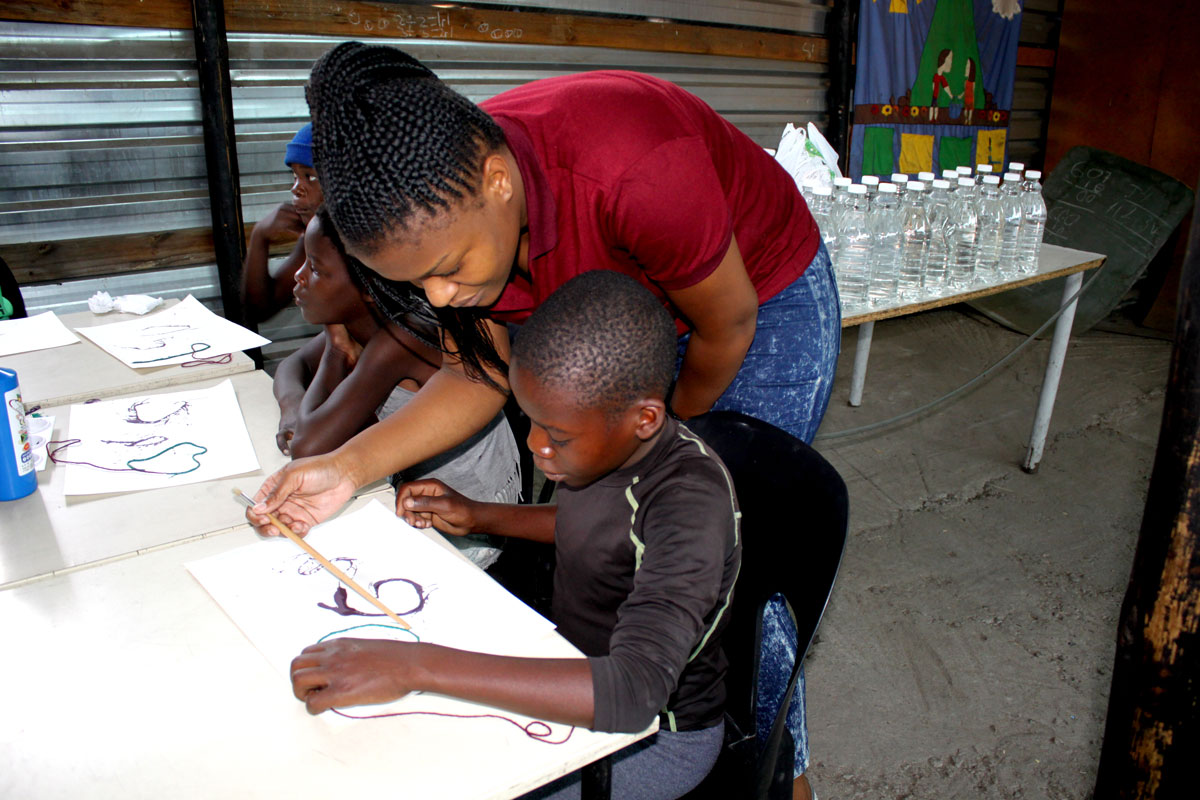
When considering ways to truly shift power in MEL practices, it is important to take the focus off the donor. MEL practices must, first and foremost, reflect what the grantee partners find most meaningful and important in the context of their programming and the program participants and communities they serve. As donors, we must work toward making our MEL agenda secondary—as long-term systems change comes from the community—and look for opportunities to build capacity through MEL. We must emphasize the experience, leadership, and ownership of our partners and hold ourselves accountable to our grantees. Inclusive and engaging MEL practices help foster more trusting relationships between organizations and communities, which can, in turn, improve programming.
